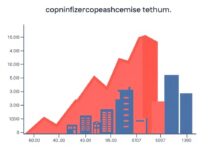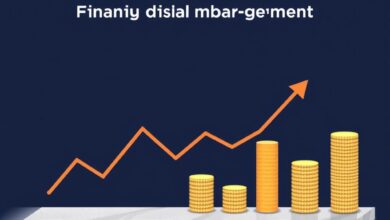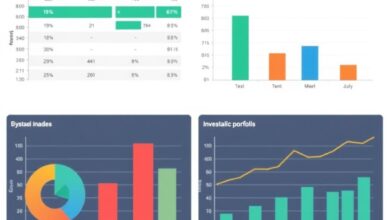Dividend investing – how to earn income from stocks

Begin with a focus on high-yield shares that consistently distribute profits back to shareholders. Prioritize companies with a proven track record of maintaining or increasing their payouts, as this signals financial stability and commitment to returning value. Aim for an average yield above 4%, which can significantly enhance your passive income stream over time.
Reinvesting dividends is another key tactic. By opting for automatic reinvestment plans, you can accelerate wealth accumulation through the compounding effect, leading to increased share ownership and future earnings potential. This approach is particularly beneficial in a low-interest-rate environment where traditional savings options may not suffice.
Consider diversifying across various sectors to mitigate risks associated with market fluctuations. Look for stocks in stable industries such as utilities or consumer staples that are less susceptible to economic downturns. Such diversification can provide a more reliable source of returns while minimizing volatility in your portfolio.
Finally, keep an eye on the payout ratio; ideally, it should remain below 60%. A lower ratio indicates that the company retains enough earnings to invest back into growth while still rewarding shareholders, reducing the risk of cuts during challenging times.
Identifying High-Yield Stocks
Focus on companies with a consistent history of distributing substantial payouts. Look for those that have maintained or increased their payments over several years, signaling stability and commitment to shareholder returns.
Utilize financial metrics such as the payout ratio and yield to gauge potential. A sustainable payout ratio, typically below 60%, indicates that a firm can comfortably cover its dividends without compromising growth opportunities.
Examine cash flow statements to ensure that operational cash flows support dividend distributions. Strong free cash flow is an indicator of a company’s ability to continue providing passive income through regular payouts.
Consider sectors known for high yields, such as utilities, real estate investment trusts (REITs), and consumer staples. These industries often exhibit steady demand, allowing firms to generate reliable earnings.
Monitor market conditions; economic downturns can affect dividend-paying stocks. However, some companies may thrive during adverse situations due to their defensive nature, making them valuable additions to your portfolio.
Stay informed about company-specific news and changes in management, as these factors can impact future profitability and dividend policies. Subscribing to financial news feeds can help you keep track of relevant updates.
Diversification across different sectors and regions is key. This approach reduces risk while maximizing the potential for receiving dividends from various sources.
Lastly, utilize stock screeners with filters set for high yield percentages and growth metrics. This tool aids in efficiently identifying candidates that align with your passive income goals.
Assessing Dividend Sustainability
Evaluate the consistency of payouts by analyzing a company’s earnings per share (EPS) over several years. A stable or growing EPS indicates strong financial health and the ability to maintain distributions.
- Payout Ratio: Calculate the ratio of dividends paid to net income. A payout ratio below 60% is often considered sustainable, providing room for future growth.
- Cash Flow Analysis: Review operating cash flow versus dividend payments. Positive cash flow ensures that companies can cover their payouts without resorting to debt.
- Debt Levels: Investigate total debt compared to equity. Lower debt levels suggest less financial strain and a greater likelihood of maintaining regular disbursements.
Monitor industry trends and economic conditions impacting performance. Companies in stable sectors tend to offer more reliable returns than those in cyclical industries.
- Historical Performance: Examine past distribution history; consistent increases may indicate a commitment to shareholders.
- Future Guidance: Review management’s outlook on earnings and capital allocation during earnings calls or reports. Positive forecasts strengthen sustainability confidence.
- Peer Comparison: Analyze similar firms within the same sector. This relative assessment helps identify leaders with robust financial practices.
A comprehensive evaluation of these factors provides insights into whether a company’s shares are likely to continue generating passive income through reliable payouts.
Diversifying Your Portfolio
Investing in a range of companies across different sectors is key to reducing risk and enhancing returns. Allocate your resources among various asset classes, including shares from different industries such as technology, healthcare, consumer goods, and utilities. This approach minimizes the impact of market fluctuations on your overall holdings.
Consider including international stocks in your portfolio to gain exposure to growth in emerging markets. Companies like Alibaba or Tencent can provide unique opportunities distinct from domestic players. Utilize exchange-traded funds (ETFs) for instant diversification without the need to buy individual shares.
Monitor the correlation between stocks within your portfolio. A mix of low-correlation assets can mitigate risks associated with sector-specific downturns. Aim for a blend of high-yield, stable stocks alongside growth-oriented ones to balance potential capital appreciation and consistent cash flow.
Diversification not only spreads risk but can also enhance passive income through multiple streams from varied sources. Maintain regular reviews of your holdings to rebalance as necessary and capitalize on changing market dynamics.
Tax Implications of Dividends
Understanding the taxation on dividends is crucial for maximizing returns. In most jurisdictions, dividends are taxed as ordinary income at your applicable tax rate. This means that investors must account for these taxes when calculating the actual yield from their shares.
Qualified vs. Non-Qualified Dividends: Not all payouts are created equal. Qualified dividends–those paid by U.S. corporations or qualified foreign companies–are typically taxed at a lower capital gains rate, ranging from 0% to 20%, depending on your income level. In contrast, non-qualified dividends are taxed at your standard income tax rate, which can be significantly higher.
Tax-Advantaged Accounts: Utilize retirement accounts like IRAs or 401(k)s to mitigate immediate tax burdens. Dividends earned within these accounts can grow tax-deferred until withdrawal, providing a strategic advantage for long-term wealth accumulation.
State Taxes: Be mindful of state taxation as well; some states impose additional taxes on dividend income, which can affect net returns. Research local regulations to understand how they apply to your portfolio.
Withholding Taxes: For international investments, consider withholding taxes imposed by foreign governments on dividends. This could impact overall profitability and should be factored into total investment calculations.
Keep precise records of all dividend payments received and associated taxes paid throughout the year to simplify filing processes and optimize tax strategies effectively.
Reinvesting Dividends Wisely
Allocate dividends to acquire additional shares of high-quality companies rather than cashing out. This approach leverages compounding, enhancing your passive income over time. Focus on stocks with a solid track record of increasing their payouts, as these often indicate strong financial health.
Utilize a systematic reinvestment plan. By automatically purchasing more shares whenever dividends are paid, you minimize market timing risks and benefit from dollar-cost averaging. This method allows you to buy more shares during price dips, effectively lowering your average cost per share.
Consider diversifying the reinvested amounts across various sectors. This not only mitigates risk but also opens up new avenues for growth in different market conditions. Allocate funds into sectors showing resilience and potential for expansion, ensuring a balanced exposure.
Monitor the performance of the newly acquired shares regularly. Reassess your portfolio every six months to ensure that each company continues to meet your investment criteria. If any stock shows signs of instability or reduced growth prospects, consider reallocating those funds to more promising opportunities.
Keep an eye on tax implications related to reinvestments. Understand how capital gains taxes may affect your strategy if you decide to sell any portion of your holdings in the future. Staying informed about these factors will help maintain the efficiency of your overall investment approach.







